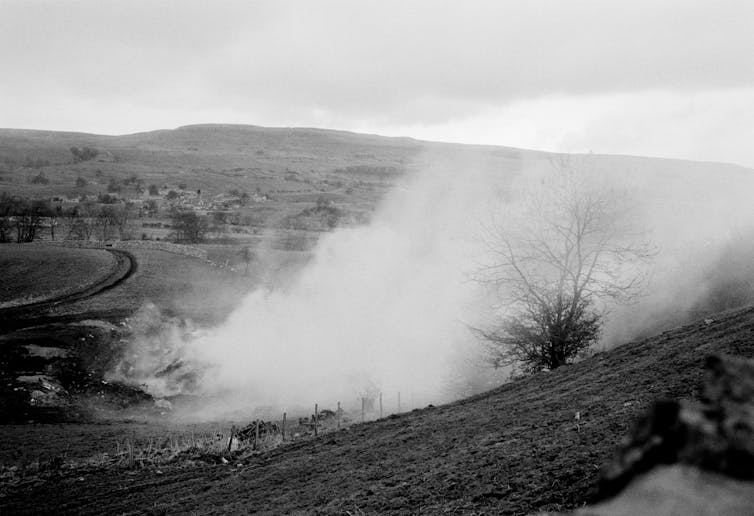By Stu Hayes*
Recent warnings of a “doomsday” scenario if foot and mouth disease (FMD) arrived in New Zealand inevitably singled out the agriculture sector. But overseas experience tells us FMD can also result in potentially severe impacts on the tourism sector.
As the 2001 FMD crisis in Britain highlighted, inadequate planning and crisis management can cause a reduction in trade, job losses and damage to a destination’s image.
This matters, because destination image is one of the leading factors influencing tourists’ decisions. Accurate or not, negative images in the media can directly affect demand.
As New Zealand ramps up preparations for a potential outbreak, important lessons from the UK’s experiences must be heeded if the local tourism sector is to avoid its own doomsday scenario.
Focus on agriculture
Following the detection in July of FMD fragments in meat products imported into Australia, the New Zealand government has expressed serious concern the disease could also find its way across the Tasman.
The economic impact of this for the agriculture sector would be catastrophic: a reduction in agricultural productivity, suspended trade in animal products, and the ongoing reputational damage of the country losing its FMD-free export status.
These concerns were foregrounded in the 2018 Foot and Mouth Disease Response and Recovery Plan. The risk to the agriculture sector has also seen a recent strengthening of biosecurity measures, including at the border where people arriving from Indonesia (FMD was detected there on April 28) are now required to disinfect their footwear.
But when it comes to government planning for (and media reporting about) FMD, there appears to be no mention of the potential impacts of an outbreak for the tourism sector. Should we be worried? A brief look at what happened in the UK in 2001 suggests yes.

The UK’s FMD tourism disaster
FMD was discovered in an abattoir in Essex on February 19, 2001. The unexpectedly rapid spread of the virus resulted in the UK government’s decision to effectively close the countryside to avoid wider contamination.
The effects on the tourism sector were severe. A National Audit Office report indicated that the sector and supporting industries lost revenues of between £4.5 billion and £5.4 billion. Over the course of the crisis, overseas visitor numbers to the UK dropped by 10%. In worst hit rural areas, the tourism sector virtually collapsed.
Inevitably, there were significant tourism-related job losses associated with the decline in visitor numbers and spending.
At the same time, the government decision to cull livestock rather than vaccinate resulted in huge pyres of burning carcasses visible throughout farming districts. It ended with what was described as a “media frenzy showing the UK as a giant barbeque”.
The images damaged the reputation and image of the UK as a tourism destination and further contributed to the loss of tourism revenue and jobs. But could these impacts have been lessened? Past research suggests they could – and with this come important lessons for New Zealand.
Lessons from the 2001 UK FMD crisis
Reviews of the UK FMD crisis highlighted several key planning and crisis management failings that contributed to the severity of the impacts felt across the tourism sector.
These failings included:
-
a lack of appreciation of the potential impacts of FMD for the tourism sector
-
a lack of consultation with relevant stakeholders from the tourism sector in crisis planning for an FMD outbreak
-
and lack of an integrated communication strategy to counter media tendencies to exaggerate the impacts.
To help limit the potential impacts of an FMD outbreak for the New Zealand tourism sector, the government should consider several urgent actions:
1) model the potential impacts of FMD on the tourism sector, including potential job losses, loss of tourism trade and potential impacts on destination image and reputation
2) prepare crisis management plans with the full engagement of key actors in the tourism sector, including relevant ministries and sector bodies
3) establish an integrated communication approach and offer public relations training for tourism enterprises to help maintain a positive destination image in the event of an FMD outbreak.
As the 2001 UK FMD crisis demonstrated, failure to act could be disastrous for the tourism sector in New Zealand.![]()
*Stu Hayes is a lecturer on tourism at the University of Otago. This article is republished from The Conversation under a Creative Commons license. Read the original article.
4 Comments
The impact on tourism in the UK was actually bigger than on agriculture. Agriculture was compensated (about 2 billion £), tourism largely wasn't... what would happen here...?
And the crazy thing is it doesn't harm humans and cattle can recover from it (with some losses of calves and prodcution). It's all about access to export markets.
F & D effect on NZ would be devastating as our currency would collapse as Ag and Tourism contract to the point all imports unaffordable, petrol for example would be significantly higher than $3 litre currently, $5 ?. In fact all imports become to expensive to consume.
It's not a mild disease for the animals, it's very painful and takes a long time for them to recover. A dairy cow would usually stop producing milk and lose a lot of weight. A policy of letting it rip and living with it isn't feasible, which is why so many countries close their borders to produce from infected countries.
If it does get here we can only hope it's picked up early while spread is still limited.
The question should be why hasn't this already happened. After all, FMD is considered endemic in a few of our trading partners, so there has been a potential for an outbreak at anytime.
We welcome your comments below. If you are not already registered, please register to comment
Remember we welcome robust, respectful and insightful debate. We don't welcome abusive or defamatory comments and will de-register those repeatedly making such comments. Our current comment policy is here.